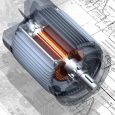If you are new to the audiophile world, terms like DACs and DAC/Amps might confuse you. Read on to get some clarity on whether a DAC/Amp fulfils your audio needs.
DACs are Digital-to-Analog Converters, and DAC/Amps, like the multipurpose ifi idsd black label, also function as portable headphone amplifiers. Sound in its natural form is an analog signal – think of a piece of paper. Digital devices like your computer, MP3 player and mobile phone can only store information in 1s and 0s – think of the paper being chopped up into many strips vertically. This process causes loss of information, but it is an efficient storage strategy. Finally, when you want to listen to the audio signal again, your device will take the strips of paper, replicate them and stick them together to make them look like an unbroken piece of paper, and then play it out. This process is digital-to-analog conversion.

All the devices mentioned above already have built-in DAC chips. But the method in which they re-create the analog signal varies widely. High-quality DACs are capable of constructing signals that closely mimic the original. They have higher computing powers that “replicate strips” more voluminously and faithfully. So, investing in a good quality DAC will ensure that you have great audio quality.
With what and when can you use DACs?
External DACs usually do not come with headphone jacks, and you will need separate amplifiers to connect your headphones. Alternatively, you can connect the DAC via a USB cable to your computer. However, if you opt for DAC/Amp, you won’t need extra equipment.
The built-in DAC chips of your electronic devices are designed to be easy to manufacture and fit in a limited space. This compromises their performance. External DACs are designed to produce clear, high-quality output. If you are looking for a close reproduction of the original input, an external DAC is the solution.
Jargon much?
- Bit rate: (into how many strips does the piece of paper get torn?) Bit rate determines how much data is stored in one second.
- Bit sample: or sample rate (how often does the DAC replicate the strips before stitching them up into a continuous piece) determines how many samples are taken per second by the DAC.
- Bit depth: (how well is each strip copied and stored) –determines the amount of data held per sample. Higher the bit depth, the higher the volume variation.
- Impedance and sensitivity of the headphones: Impedance is the resistance offered by your headphones to electric signals. It prevents your audio from being very loud. Sensitivity describes how loud the headphones’ output will be to a given input.
Using these two, you can get an idea of how much input power is needed to get a desirable output volume level. Couple this information with the power information of your amplifiers, and you can narrow down on which amplifier will work best with your headphones for your desired range of volumes.
What benefits can you expect?
Clarity, fidelity and higher volume are the basic expectations when you use a DAC and amplifier combination. When listening to music on high impedance headphones without using amplifiers, you could experience unwanted artefacts in the sound. Amplifiers will help you eliminate that.
Functionality: versatile units like the ifi idsd black label provide you with three modes of amplification: normal, turbo and eco, depending on the sensitivity of your headphones or in-ear monitors.
Some DAC devices also have a digital filtering switch – for standard, minimum, phase and bit-perfect modes for appropriate conversion.
In conclusion, if you are a seasoned or a neophyte audiophile, owning a DAC and headphone amplifiers will certainly enhance your auditory experience.





